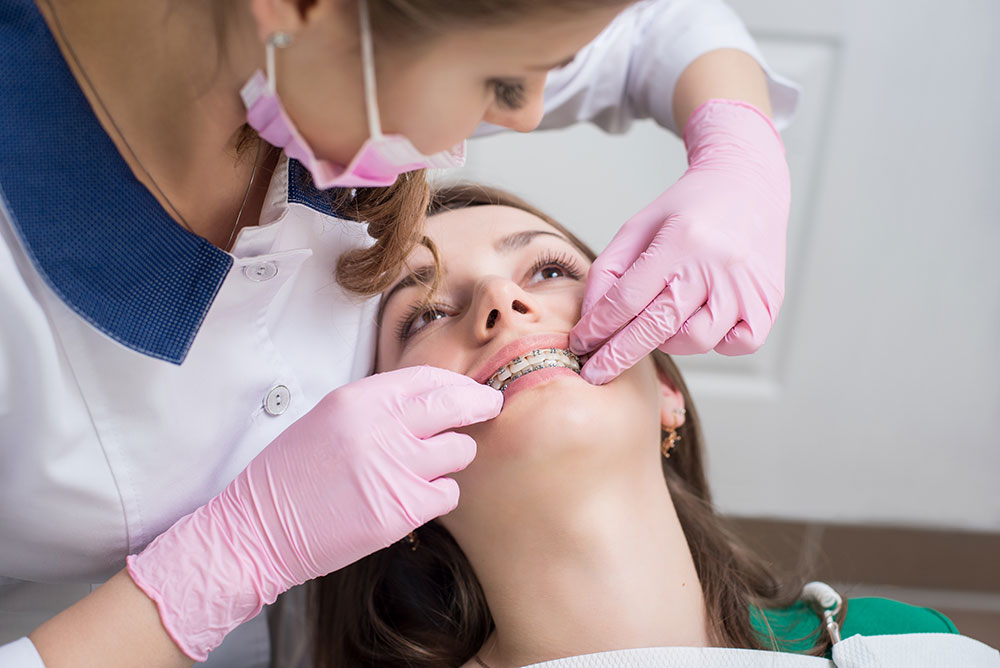How Legacy Orthodontics can Save You Time, Stress, and Money.
Table of ContentsLegacy Orthodontics - QuestionsLegacy Orthodontics Fundamentals ExplainedThe Ultimate Guide To Legacy OrthodonticsThe Facts About Legacy Orthodontics UncoveredGetting My Legacy Orthodontics To Work
In enhancement, we use adjustable therapy timetables, adaptable settlement choices and a fun, pleasurable experience.An orthodontist is a dental expert educated to identify, avoid, and treat teeth and jaw abnormalities. Orthodontists work with people of all ages, from children to adults.
Malocclusion, or misaligned teeth, can bring about dental concerns, consisting of dental caries, gum condition, and challenging or excruciating eating. Not every person is born with straight teeth. If you have a bad bite or huge areas between your teeth, you might wish to seek advice from a dental practitioner specializing in orthodontic care.
Not known Factual Statements About Legacy Orthodontics
( Picture Credit History: DigitalVision/Getty Images) Orthodontists use fixed and removable oral devices, like dental braces, retainers, and bands, to alter the placement of teeth in your mouth. Orthodontic treatment is for oral abnormalities, consisting of: Jagged teethBite issues, like an overbite or an underbiteCrowded teeth or teeth that are as well much apartJaw misalignmentThe objective of orthodontic therapy is to enhance your bite.
A healthy and balanced bite ensures you can eat, eat, and speak appropriately. While you may think about orthodontists as mostly for children or teens that need dental braces, they can remedy oral troubles at any age. Orthodontists attend college, oral college, and orthodontic college. After college graduation, they spend 2 or 3 years in an orthodontic residency program.
, but not all dental professionals are orthodontists. They concentrate on 2 locations: Just how to appropriately and securely move teeth Exactly how to appropriately assist growth in the teeth, jaw, and faceOnce an orthodontist has completed training, they have the option to become board certified.
Little Known Facts About Legacy Orthodontics.
Misalignment, or malocclusion, is one of the most usual reason individuals see an orthodontist. It is genetic and is the result of size distinctions between the top and lower jaw or between the jaw and teeth. Malocclusion results in tooth congestion, an askew jaw, or uneven bite patterns. Malocclusion is generally treated with: Your orthodontist connects steel, ceramic, or plastic square bonds to your teeth.
If you have only small malocclusion, you might be able to make use of clear dental braces, called aligners, rather than traditional braces (https://letterboxd.com/legacyortho/). Some individuals require a headwear to aid relocate teeth right into line with stress from outside the mouth. After dental braces or aligners, you'll need to wear a retainer. A retainer is a custom device that keeps your teeth in position.
They can develop added room in the mouth without having to draw teeth. Orthodontists make use of wires, surgical screws, or plates to support your jaw bone.
You might need to see an orthodontist if you have: Crowding or otherwise sufficient room for all of your teethOverbite, when your upper teeth come your bottom teethUnderbite, when your bottom teeth are as well much forwardSpacing or concerns with gapsCrossbite, which is when your top teeth fit behind your bottom teeth when your mouth is closedOpen bite or a vertical gap between your front bottom and top teethMisplaced midline, when the facility of your bottom and upper teeth do not line up Dealing with an oral malocclusion can: Make attacking, chewing, and speaking easierImprove the symmetry of our face and your total appearanceEase discomfort from temporomandibular joint problemsSeparate your teeth and make them easier to clean, assisting prevent dental cavity or cavities It's frequently a dental expert who initially notifications misaligned teeth during a regular exam.
What Does Legacy Orthodontics Do?

During your first orthodontic appointment, you'll likely have: An oral examPhotos taken of your face and smileDental X-raysPanoramic (360 degree) X-rays of your face and headImpressions to develop molds of your teethThese tests will certainly assist your orthodontist know just how to proceed with your treatment. leesburg clear braces. An orthodontist is a dental professional who's had training to treat your teeth and jaw
Orthodontists might carry out surgery, exams,X-rays,and even more to aid you acquire a more comfortable, much healthier smile. An orthodontist is concentrated on your bite, so something like a cracked tooth would certainly be handled by a dentist. Orthodontists are dental professionals yet not all dental experts are orthodontists. Orthodontists are focused on your bite, or the means your teeth fit with each other, and the straightness of your teeth.
Ever before questioned how stars constantly seem to have flawlessly straightened teeth? The solution frequently hinges on the knowledgeable hands of an orthodontist. Yet just what does an orthodontist do? Orthodontists are oral experts that concentrate on dealing with abnormalities in the teeth and jaws. Their proficiency surpasses simply creating a lovely smile; it includes enhancing your overall dental wellness and feature.
Legacy Orthodontics for Dummies

While braces are the most generally acknowledged orthodontic therapy, orthodontists have a diverse toolkit at their disposal. The particular approach picked depends on the extent of the instance, the client's age, and specific choices. These tried-and-true braces make use of a system of brackets bound to the teeth and attached by cords.
Clear aligners, like Invisalign, are a preferred alternative for people looking for a much more discreet treatment choice. These removable trays are customized link to gradually move the teeth's position. Headgear may be utilized combined with braces or aligners to use extra targeted forces, specifically for remedying jaw discrepancies. In situations of slim jaws, palatal expanders can be made use of to develop room for correct tooth positioning.